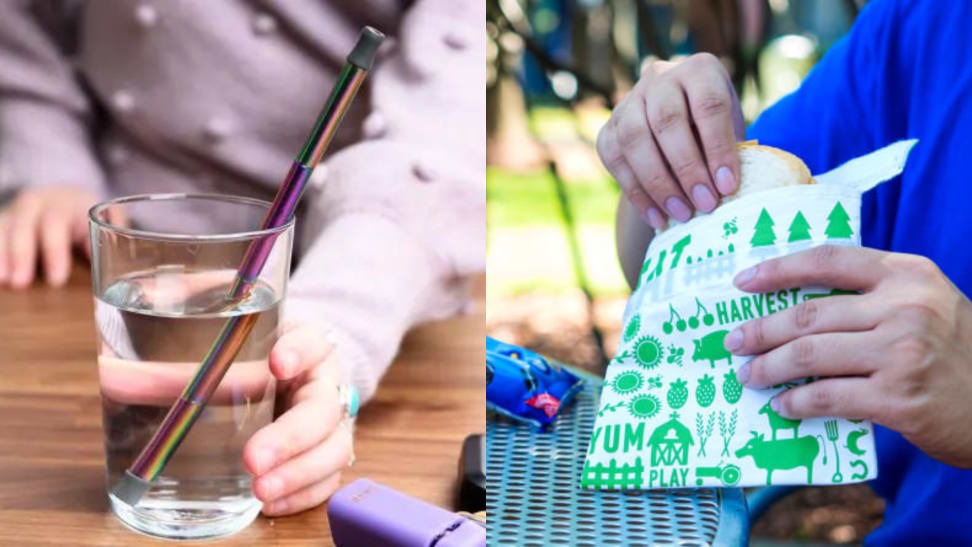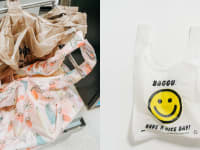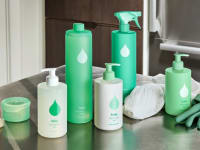 Credit:
Reviewed / Betsey Goldwasser / Jackson Ruckar
Credit:
Reviewed / Betsey Goldwasser / Jackson Ruckar
Products are chosen independently by our editors. Purchases made through our links may earn us a commission.
If you’re down for the challenge of taking strides to a healthier world, you can get your feet wet this month, which the Plastic Free Foundation has dubbed “Plastic Free July.”
In 2020, this initiative brought together 326 million participants globally, who collectively took steps to “be part of the solution to the growing plastic waste problem,” according to foundation chair Gunther Hoppe.
You can do your part by swapping out single-use plastic bags for reusable ones as well as refusing single-use items when they aren’t necessary.
There are other ways to join as well, like sharing educational resources—like your city’s recycling guidelines and compost programs—as well as picking up litter.
Here's what you need to know about Plastic Free July.
What is Plastic Free July?
The Plastic Free Foundation’s Plastic Free July tackles plastic pollution. It is a month-long challenge that aims to encourage consumers to refuse single-use plastics and incorporate more sustainable alternatives into their lives.
The goal is to put a serious dent in plastic production, an industry that, according to Plastic Free July founder Rebecca Prince-Ruiz, is set to quadruple by 2050. She says, “To create a world without plastic waste, we need to turn off the tap, not mop the floor.”
As a consumer, you can do this by reducing how many single-use plastics you consume in your home and daily life, which adds up to a lot when you look around your kitchen and purse.
With over 300 million people challenging themselves to reduce plastic use, the impact has potential to be huge.
What is plastic waste and plastic pollution?

Tons of plastic waste collects in our oceans, not only disturbing ecosystems, but marine wildlife as well.
If you’re not sure what plastic waste actually is, just think about the bag your bread comes in, the gallon of milk in your refrigerator, your to-go coffee cup, the plastic fork that comes in your bag of takeout, the plastic wrap around your school supplies, and the plastic bags you receive when you go shopping.
The list is long, but there are ways to affordably swap these plastics to materials that don’t pollute waterways and landfills once you toss them in the trash can or negatively impact the world’s ecosystems and environments.
There are reports of massive plastic pollution sites like the Great Pacific Garbage Patch.
Research published in 2020 by The Pew Charitable Trusts and Systemiq with partners the University of Oxford, University of Leeds, Common Seas, and the Ellen MacArthur Foundation, shows that if we don’t act, “the annual volume of plastic entering the ocean will almost triple, from 11m tonnes in 2016 to 29m tonnes in 2040.”
What’s more is that plastics in waterways harm animals and water ecosystem health, but they also break down into microplastics that we actually consume ourselves.
It’s OK to start small
While the outlook seems grim, these kinds of statistics are ones that inspire action.
You can try to follow the three R’s: Reduce, reuse, recycle.
- Reduce your single-use plastic consumption by being prepared with your own reusables.
- Reuse items so you can say no the next time they’re offered.
- Research your local recycling standards so you can recycle properly and effectively.
Ways to use less plastic

Find refillable items and reusable containers that work with your lifestyle. Not only are they stylish, but they're handy too.
The first step to reducing your waste is to identify where it comes from. Is the majority of your single-use plastic from the grocery store? Are your beauty products the main problem? What items do you find yourself buying then throwing away over and over?
Your personal answers to these questions will lead you to the areas where you can find sustainable alternatives that fit your habits. Be honest with yourself and find a few small swaps that are affordable and easy to integrate into your life.
For starters, the Plastic Free July site offers a whole library of resources, so once you know what area(s) you want to tackle you can find research and alternatives.

Support plastic-free cosmetic brands like Elate Beauty.
I recommend picking an area of your home or life and making changes gradually. Always having a reusable bag on hand is a great place to start.
If you’re looking to reduce plastic in your kitchen, you can try mesh produce bags and insulated grocery bags.
If you want to reduce single-use plastics in your beauty routine, look for bamboo toothbrushes, plastic-free deodorants, bars of soap, and refillable products.
Just remember that it’s most sustainable to use what you already have. So, if you need reusable utensils on the go, you can always grab some from your silverware drawer before buying an aesthetically pleasing bamboo set.
Shifting to a plastic-free lifestyle takes some planning ahead and investments up front, but it’s better for the planet (and your wallet) long-term.
Can you make a difference without fully committing?

Incorporating plastic-free items into your bathroom does more good than you know.
Absolutely! Any single-use plastic you can say “no” to this month (and always) is a step toward less plastic pollution. Each toothbrush, water bottle, and straw that you turn down is one less item that will sit in a landfill or pollute the ocean.
Because the zero waste movement is so broad, it’s easiest to start in this piecemeal way.
You can also engage with your community to create a community garden, a compost exchange, or local cleanups to help create eco-friendly habits and remove plastic from your environment.
It’s OK if you forget your reusable coffee tumbler a few times because Plastic Free July is all about being more mindful of the plastic you consume and working to build plastic-free habits. Once you create the habits, keep them in your life all year long!
- Get the FinalStraw at Amazon for $24
- Get the Brita Stainless Steel Water Filter Bottle at Amazon for $30
- Get the Lunchskins Reusable Food Storage Bags at Amazon for $11
The product experts at Reviewed have all your shopping needs covered. Follow Reviewed on Facebook, Twitter, Instagram, TikTok, or Flipboard for the latest deals, product reviews, and more.
Prices were accurate at the time this article was published but may change over time.


